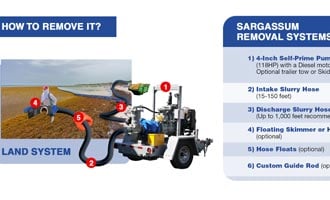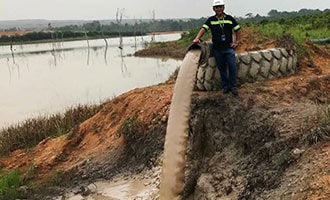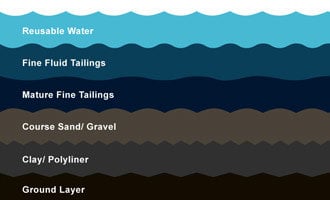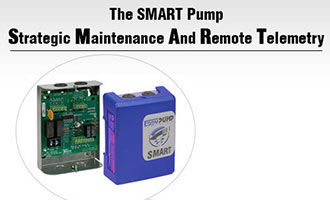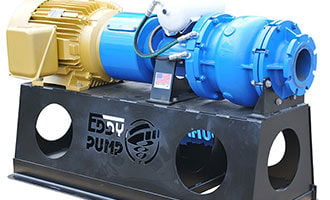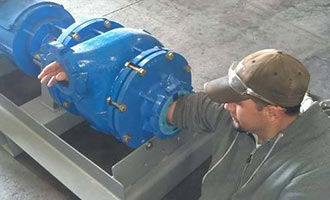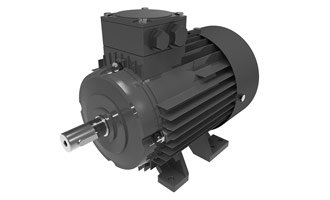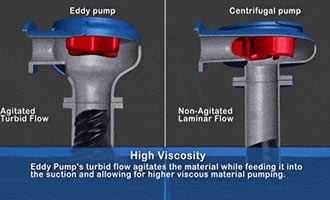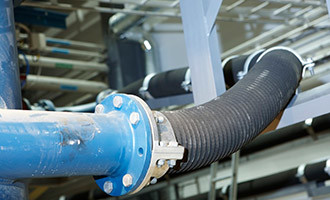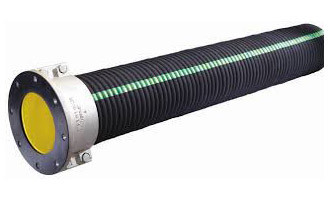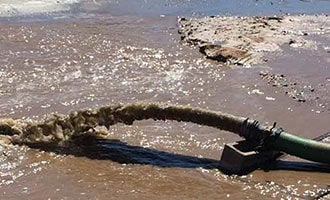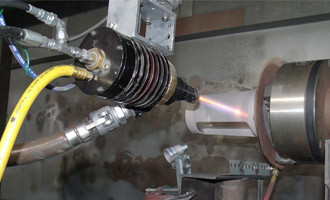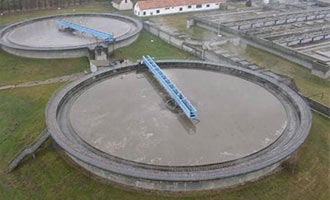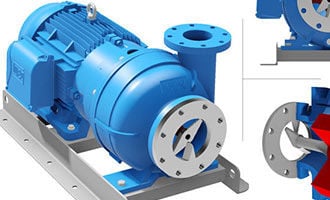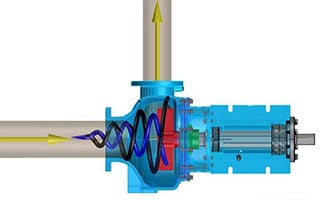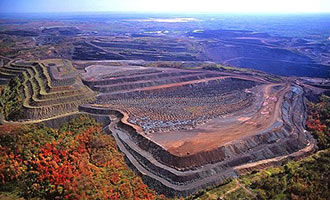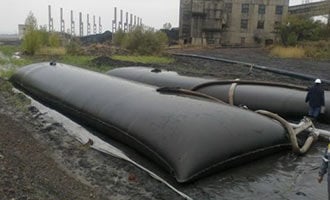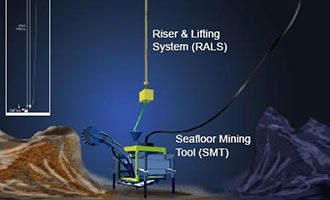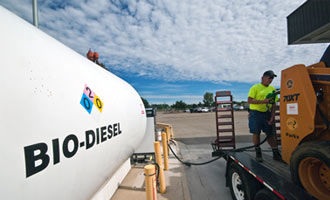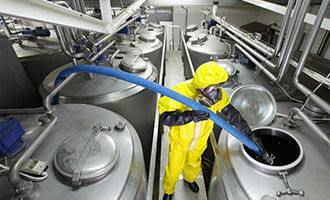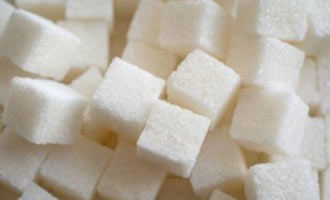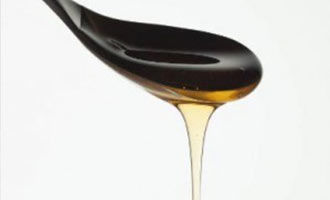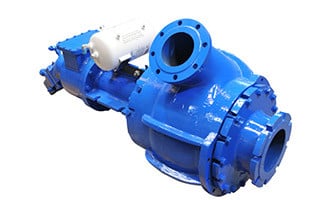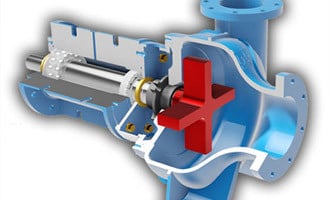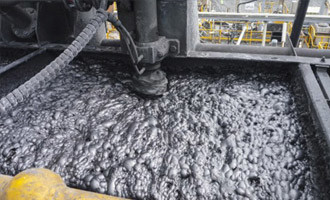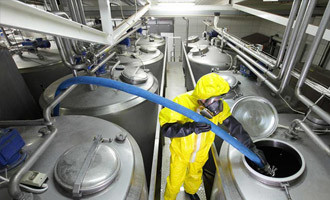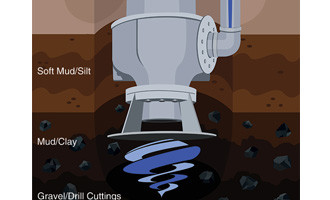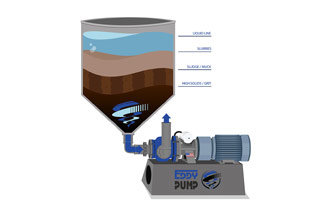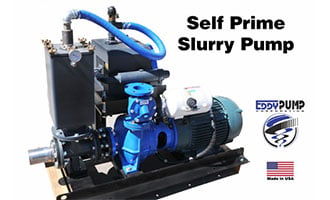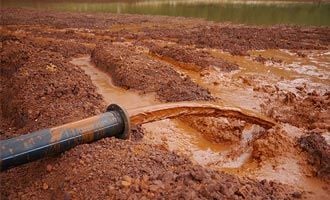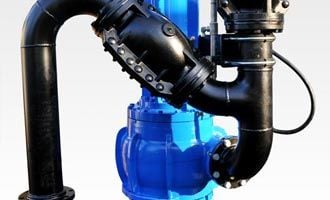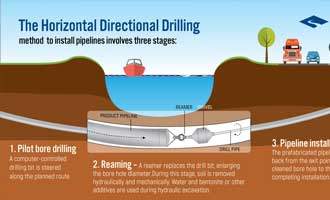Dredge Pump Selection 101
Dredge pump selection can be a challenging task, lets try to simplify the process. Browse Our Dredge PumpsContact Us For a Fast QuoteHow to Select a Dredge Pump or Slurry Pump
Dredge Pump Selection Introduction
Dredge pump or slurry pump selection could be a challenging process which could be simplified with the understanding of the primary factors behind smooth pump operation. Apart from delivering a more efficient performance, the right dredge pump requires lesser maintenance, reduced power and has a relatively longer life.
Slurry pump and dredge pump terms may be used interchangeably.

Definition of Dredge Pump and Slurry Pump
Slurry pumps are the mechanical devices utilized for pressure-driven transport of a fluid mixture (aka slurry). The fluid mixture by and large consists of water as a liquid with solids being minerals, sand, gravel, human waste, drilling mud or most of the crushed materials.
Dredge pumps are a special category of heavy-duty slurry pumps that are utilized in the process of dredging. Dredging is referred to as the process of transport of underwater sediments (usually sand, gravel or rocks) from one region to another (a piece of typical dredging equipment is shown in Figure 1). Dredging takes place in shallow water areas of lakes, rivers or ocean for the purpose of land reclamation, desilting, flood prevention, creation of new ports or expansion of existing ports. Hence, various industries that utilize dredge pumps are the construction industry, mining industry, the coal industry, and oil & gas industry.
Figure 1: A specialized dredge pump attachment for excavators, in the dredging process
Primary selection requirements for dredge pumps
Apart from economic considerations, two primary selection considerations for dredge pump operation are no settlement of sediments in the pump and minimum amount of wear and tear in the pump due to the flow operation. The key design parameters to keep in mind to satisfy the primary requirements are the type of installation, critical flow rate, total discharge head, and the pump design material.
Know your slurry type:
Before moving on to estimating the design parameters of ‘your’ slurry pump, an extremely crucial step is being familiar with the material that needs to be transported. Therefore, estimation of pH and temperature of the slurry, the specific gravity of slurry and concentration of solids in the slurry is the first crucial step towards the direction of ‘your’ ideal pump selection.
Critical flow rate estimation:
Critical flow rate is the transition flow rate between a laminar and a turbulent flow and is calculated based on grain diameter (size of slurry particles), the concentration of solids in the slurry and the pipe diameter. For minimal settlement of sediments, the actual pump flow rate of ‘your’ pump should be higher than the calculated critical flow rate for your application. However, it is important to be careful with the selection of the pump flow rate as the increase in flow rate will increase the wear and tear or abrasion of the pump material and hence reduce the lifetime of the pump. Hence, for an uninterrupted performance and extended lifetime, the pump flow rate should be optimized.
Discharge head estimation:
Total discharge head is a combination of static head (actual elevation difference between the surface of the slurry source and the discharge) and friction loss in the pump. Along with dependence on the geometry of the pump (pipe length, valves or bends), friction loss is also affected by the pipe roughness, flow rate and slurry concentration (or percentage of solids in the mixture). The friction losses increase with the increase in pipe length, the specific gravity of the slurry, concentration of the slurry or the slurry flow rate. The pump selection procedure requires that discharge head of ‘your’ pump is higher than the calculated total discharge head. On the other hand, it is crucial to note that the discharge head should be kept as low as possible to reduce the pump abrasion due to slurry flow.
Pro Tip – How to Choose a Pump
Essential Questions
- What type of material will be pumped? (sand, mud, coarser particles, sludge, etc)
- Flow rate target goals? (400 GPM, e.g.)
- Length of pipeline? (700 FT or M, e.g.)
- Elevation rise of pipeline? (20 FT or M, e.g.)
- Type of pipeline? (plastic, metal, e.g.)
- What is the density of the material?
- What is the viscosity of the material?
What you should know about your project. These items are important in determining the proper EDDY Pump for your project. Hopefully, any company you get a quote from is asking these questions. This is especially important in the pumping of sludge, slurry, muck, mud, and other viscous materials. Call us for a consultation.
Pump power rating:
The power consumption by the dredge pump is estimated from the discharge head, flow rate and specific gravity of pumped slurry. It is critical to verify that power rating of the selected pump is higher than the calculated power consumption after taking into account reasonable variations in operating conditions.
Material selection:
Typical material used for the construction of slurry pumps are cast iron, stainless steel, and high chrome steel. Some slurry pumps come with a lining to better deal with problems of slurry abrasion. A few elastomers which are used in the lining material are natural rubber, polyurethane or neoprene. The selection of lining material depends on the operating temperature, pH of slurry and the presence of specific abrasive fluids used in the dredging process.
Type of slurry pump installation:
Based on the shaft orientation, the slurry pumps can be divided as horizontal pumps and vertical pumps with horizontal pumps having the shaft in a horizontal position while the vertical pumps have a vertically aligned shaft.
Horizontal pumps are the most common types of slurry pumps used, and hence have the advantage of ease of installation or maintenance, a wide range of selection of flow parameters and choice of design materials. However, the vertical pumps among other benefits have the advantage of requiring relatively much lesser ground space for installation.
Another method to classify the type of installation for slurry pumps is dry installation or wet installation. Dry installation pumps have the hydraulic end and the drive located outside the liquid while the wet installation pumps such as submersible pumps operate inside the sump or the slurry. The submersible pumps do not require much support structure, hence, do not occupy much space. Depending on the kind of operation and installation desired the preferred method of pump installation is decided.
Specific problems faced in Dredge pump operation
Pump Clogging:
Due to an extremely varied grain size distribution of materials handled by dredge pumps clogging of the suction or discharge of the pumps is a damaging phenomenon which leads to expensive maintenance procedures and more importantly high downtime. Our patented technology at EDDY pump has a high tolerance of sizes of materials handled, with a capacity to handle sizes as large as 12 inches. The open rotor design lets anything which can go through the inlet pass through the discharge without any setbacks. A typical high tolerance dredge pump manufactured at EDDY Pumps is shown in Figure 2.
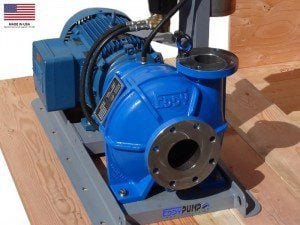
Figure 2: A high tolerance EDDY Pump. 3-inch Pump Designed For Non-Clogging and Heavy Slurry. Call for details.
Abrasion:
Massively abrasive nature of slurry’s solid particles causes an enormous amount of wear and tear in pumps. Due to the harsh environments in which slurry pumps operate, EDDY pump gives utmost importance to use the finest material for the impeller, seal, and casing to prolong the lifetime of the pump.
Conclusion:
Hopefully, you have a better understanding of the elements needed for proper pump selection. Even better is talking with us to help with your project specific needs. View our videos, pump page and explore the site.
At EDDY Pump we are committed to providing best-in-class dredge pumps to our customers; hence, each component is thoroughly tested to deliver supreme quality, reliability and versatility. Our unique technology provides us with an extraordinary capability to easily handle materials with enormous volumes and high specific gravity in tough conditions.
With an on-site R&D facility, we constantly strive hard to improve our products and stay best in the market for pump technology. Email or Call Us with Pump Questions 619-404-1916
Order or Get Selection Help
Related Products
HD (Heavy Duty) Slurry Pumps
This video shows how EDDY Pump transports high slurry and abrasive materials. Featured dredge pump equipment includes the Remote Operated Subdredge, Diver Operated Pump and an Excavator Attachment Dredge Pump.
Dredge Pump FAQs
What is a dredge pump?
A dredge pump is a type of centrifugal pump specifically designed to remove and transport sediment, silt, or debris from bodies of water. It is a crucial component of dredging equipment used in various industries, such as mining, construction, and environmental remediation.
How does a dredge pump work?
Dredge pumps use centrifugal force to create a vacuum that draws in sediment-laden water. The rotating impeller then imparts kinetic energy to the mixture, accelerating it through the pump casing and discharging it through the pump outlet.
What factors should be considered when selecting a dredge pump?
Factors to consider when selecting a dredge pump include:
- Type of material to be dredged (e.g., sand, mud, gravel)
- Dredging depth and distance
- Required flow rate and head pressure
- Pump efficiency and wear resistance
- Operating conditions (e.g., temperature, pH)
- Budget and project timeline.
What are the different types of dredge pumps?
Common types of dredge pumps include:
- Submersible dredge pumps
- Hydraulic dredge pumps
- Cutter suction dredge pumps
- Horizontal dredge pumps.
How do you determine the appropriate size of a dredge pump?
The size of a dredge pump is determined based on factors such as the volume of material to be dredged, dredging depth, required flow rate, and head pressure. Hydraulic calculations and pump performance curves select a given application’s most suitable pump size.
What are the advantages of submersible dredge pumps?
Advantages of submersible dredge pumps include:
- Ability to operate underwater without the need for priming
- Compact design for easy deployment and maneuverability
- High efficiency and performance in abrasive environments
- Minimal noise and vibration during operation.
How do you ensure the longevity of a dredge pump?
Regular maintenance and proper operation are essential to ensure a dredge pump’s longevity. This includes:
- Inspecting and replacing worn parts as needed
- Lubricating bearings and seals
- Flushing and cleaning the pump system
- Monitoring performance and addressing any issues promptly.
What are the critical considerations for pump installation and setup?
- Critical considerations for pump installation and setup include:
- Proper alignment and positioning of the pump
- Adequate support and anchoring to prevent movement
- Correct installation of inlet and outlet piping
- Ensuring sufficient clearance and access for maintenance.
How do you troubleshoot common issues with dredge pumps?
Common issues with dredge pumps include cavitation, wear of impeller and liners, and blockages. Troubleshooting involves identifying the root cause of the problem and implementing appropriate solutions, such as adjusting pump speed, replacing worn parts, or clearing blockages.
What are the safety considerations when operating a dredge pump?
Safety considerations when operating a dredge pump include:
- Proper training for personnel
- Adherence to safety protocols and regulations
- Use of personal protective equipment
- Regular inspection and maintenance of equipment
- Implementation of emergency response plans.
What is a dredge pump?
A dredge pump is a type of centrifugal pump specifically designed to remove and transport sediment, silt, or debris from bodies of water. It is a crucial component of dredging equipment used in various industries, such as mining, construction, and environmental remediation.
What machine is used for dredging?
Dredging is typically performed using specialized equipment such as dredges, which may include:
- Cutter suction dredges
- Hydraulic dredges
- Excavator dredges
- Clamshell dredges.
What is the purpose of dredging?
The purpose of dredging is to:
- Maintain navigable waterways for shipping and maritime traffic
- Prevent flooding by improving drainage and water flow
- Restore aquatic habitats and ecosystems by removing sediment and debris
- Support construction projects such as bridge and port infrastructure.
How does a water dredge work?
A water dredge uses hydraulic or mechanical forces to excavate sediment from the bottom of bodies of water. The dredged material is transported via pipelines or barges to a designated disposal site or processing facility.
What is dredging and its types?
Dredging removes sediment, silt, or debris from the bottom of bodies of water to maintain navigable channels, improve water quality, or reclaim land. Common types of dredging include:
- Hydraulic dredging
- Mechanical dredging.
How is dredging good?
- Dredging can have several positive effects, including:
- Maintaining navigable waterways for shipping and maritime traffic
- Preventing flooding by improving drainage and water flow
- Restoring aquatic habitats and ecosystems by removing sediment and debris
- Supporting construction projects such as bridge and port infrastructure.
How is dredging done?
Dredging is typically done using specialized equipment such as dredges, which may employ hydraulic or mechanical methods to excavate sediment from the bottom of bodies of water.
What are the three significant effects of dredging?
The three significant dredging effects are:
- Maintaining navigable waterways
- Preventing flooding
- Restoring aquatic habitats and ecosystems.
What is the depth of dredging?
The dredging depth depends on project requirements, maritime needs, and environmental considerations. Dredging depths can range from shallow areas to deeper channels.
What is the cost of dredging?
Dredging costs vary depending on project size, duration, location, equipment, and disposal methods. For large-scale projects, they can range from thousands to millions.
How is dredging quantity calculated?
Dredging quantity is calculated based on factors such as the volume of material, dredging depth, and sediment density. Hydraulic calculations and survey data estimate the amount of material to be removed.
What are the two main types of dredging?
The two main types of dredging are hydraulic dredging and mechanical dredging. Hydraulic dredging uses water jets or suction to excavate sediment, while mechanical dredging uses buckets, scoops, or cutting devices to remove material.
Why EDDY Pumps Are Better - Highlights
This video shows how EDDY Pump transports high slurry and abrasive materials. Featured dredge pump equipment includes the Remote Operated Subdredge, Diver Operated Pump and a Excavator Attachment Dredge Pump.



